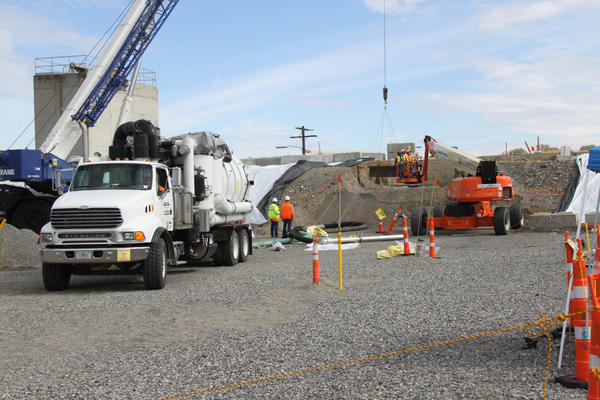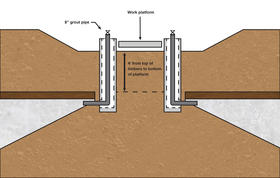
Hanford Crews Nearly Ready To Seal Up Tunnel With Grout
Listen
Crews at the Hanford Site in southeast Washington state are running through rehearsals and last minute details. In early October, they’ll begin pouring grout, a kind of thin cement, into a partially collapsed tunnel full of highly contaminated radioactive waste.
“Tunnel 1” is connected to the PUREX plant, a mothballed plutonium processing factory. This past spring, the train tunnel partially collapsed causing an emergency at Hanford.
Now, the government has hired a contractor to fill the tunnel up with grout to stabilize it and keep it from collapsing further
It’s a major operation. The tunnel will take about 600 trucks of grout and about one month to fill up. It will all happen at night so the trucks don’t get stuck in traffic.
Workers have installed pipes that run down into the tunnel and a scaffold over the tunnel they call “the bridge.”
The contractor doing the work, CH2M HILL Plateau Remediation Company, said the grout mixture will be warm, but not at temperatures that will be trouble for the radioactive waste.
Critics of the plan worry that the federal government will never remove all this grout and the radioactive waste it encapsulates. They don’t want it to become a near-surface radioactive waste dump.
9(MDAyNTQ1NzQ1MDEyMjk0OTcxNTI4MzljZQ001))
Related Stories:

Programas Head Start reabren en el centro de Washington
Más de 400 niños de varias comunidades del centro de Washington regresaron a sus aulas tras la llegada de los fondos federales para los programas Early Head Start y Head Start de Inspire Development Centers.

One woman finds healing by caring for wild animals on the Palouse
Haku the pig, a resident at Palouse Wildlife Rescue and Rehabilitation, draws lots of attention from visitors. (Credit: Ryan Law) Listen (Runtime 3:49) Read It’s dark inside this large red

Head Start programs reopen in Central Washington
More than 400 children in Central Washington are returning to their classrooms following the arrival of federal funds for Early Head Start and Head Start programs at Inspire Development Centers. The organization offers early childhood education programs to low-income children through various centers.













